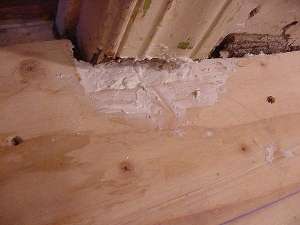|
Preparing the Surface
Preparation is critical. If you don't take your time during this
phase you will be retiling sooner than you want. In general, it is best
to remove whatever floor is currently in place and start with the sub-floor.
The surface should be smooth, clean and level. If there are holes or
depressions in the subfloor they should be filled using a self-leveling
compound. For the most common floors, the following is recommended:
Ceramic Tile:
It is possible to tile over existing tile but not
recommended. One problem is the difference in height between the new floor and
adjoining rooms. If you decide to tile over existing tiles, sand the existing
tiles with a coarse-grit sandpaper to increase adhesion between the adhesive and
the new tiles.
Wood:
If you are tiling over a plank or strip floor, simply install cement
backerboard over the floor.
Vinyl or Linoleum:
It is acceptable to tile over these surfaces. Simply
install cement backerboard over the existing floor. If you elect to remove the
flooring, make sure that it does not contain asbestos. If you are unsure, call your local health
department for instructions. If the mastic will not come up with a scraper you
might try a heat gun to soften it. Just make sure that you have adequate
ventilation as the mastic may contain some nasty chemicals.
Concrete:
Make sure that the floor is fully cured and level. If the floor
is not level you may have to use some self-leveling filler.
Final Clean-up
After the surface preparation is finalized, clean the floor with a damp
sponge. Make sure that you have plenty of clean water and rinse the sponge
often. This will help improve adhesion.
|

|



